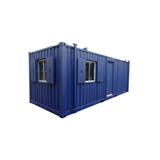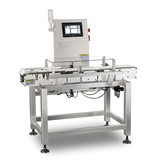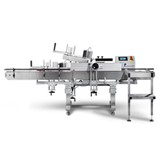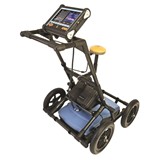When you throw in technology, that web becomes much more complex and interconnected.
Technology has allowed everyday objects to "communicate" with each other. For example, wireless technology can allow your computer in your bedroom to talk to your television in the lounge room and your printer in the study. The research community calls this interconnected world the "internet of things".
"To help us research in this area we develop low power, wireless sensor platforms, known as motes, as needed for specific applications," Philip Valencia, research engineer at CSIRO, said.
CSIRO currently has a number of applications where these wireless sensors need to be small, light and cheap, so it developed a mote which weighs only 9 grams.
The mote was light enough that an inflatable "blimp" was able to offset the weight of the motors and the mote itself.
"This is cool because unlike propeller-based lifts, if something goes wrong and engines cut out, it will just float along and not spectacularly crash," Valencia said.
"The shape of the blimp was inspired by the tubular paper planes I used to make at uni and I was curious to find out how the aerodynamics for a blimp where the propeller was ‘inside’ the tube would work. As it turns out, not too badly."
The end result was a project by Queensland University of Technology avionics engineering student Bryan Huang,
Huang developed a 1m-wide blimp – a modified party balloon – which could be navigated around corridors using three propellers for movement. Wireless infra-red sensors were placed throughout the building and also placed on the blimp to detect walls and other obstacles.
The original aim of the project was to guide visitors in the building from the reception room to designated rooms.
"Unfortunately, it hasn't quite got to that stage of autonomous navigation as yet," Valencia said.
The blimp will be most beneficial to search and rescue operations where ground-based equipment is not suitable.
As for more office-based applications, Valencia says there are not many situations where it would be practical.
However: "Mechanisms for allowing humans to deploy and interface to pervasive computing platforms is of great interest to us and is something we have begun research into," Valencia said.
For those in the industry who may be interested in developing their own blimp, parts for the electronics cost around $200.
"The labor costs, however, are about a three-month vacation scholar," Valencia joked.
Although it may not be practical at this point in time, its wireless technology may be.
Wireless technology is a rapidly growing field, from wireless internet networks to wireless lighting growing in popularity.
"As the technology improves and the size, cost, weight and energy consumption keep decreasing, I would imagine more wireless sensors and networks will be deployed, much like there are evermore wireless devices being adopted by society in general," Valencia said.
He says wireless sensor networks will provide an unprecedented level of understanding of the world through access to remote "sensing".
"Wireless technology is replacing inefficient and human-intensive methods of reading utility meters and has been used to gain access to sensor information which was previously unmeasured," he said.
Valencia is currently researching this area – he is involved in a project which measures the power usage of each outlet used by individuals in CSIRO’s building wing. It also measures temperature, humidity, carbon dioxide levels, light, pressure and wind.
"This is an example of the unprecedented level of information that will be available in the not too distant future. Our aim is to develop real-time systems that utilise and interact with the Internet of Things for applications such as balancing energy consumption versus comfort for example," Valencia said.

![[Bryan] Huang developed a 1m-wide blimp – a modified party balloon – which could be navigated around corridors using three propellers for movement.](http://portalimages.blob.core.windows.net/features/images/6955.jpg)






-160x160-state_article-rel-cat.png)
-160x160-state_article-rel-cat.png)





-160x160-state_article-rel-cat.png)




